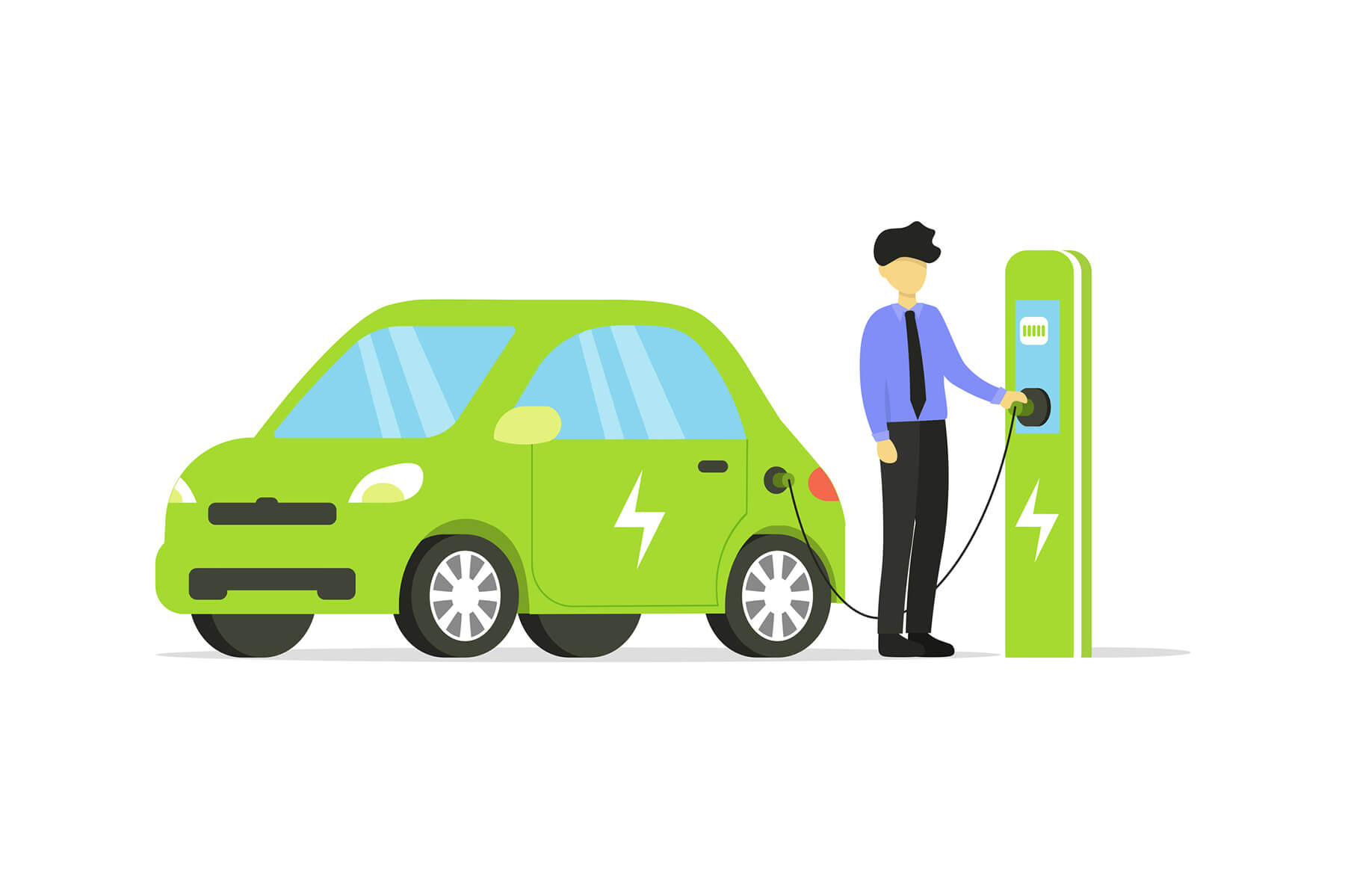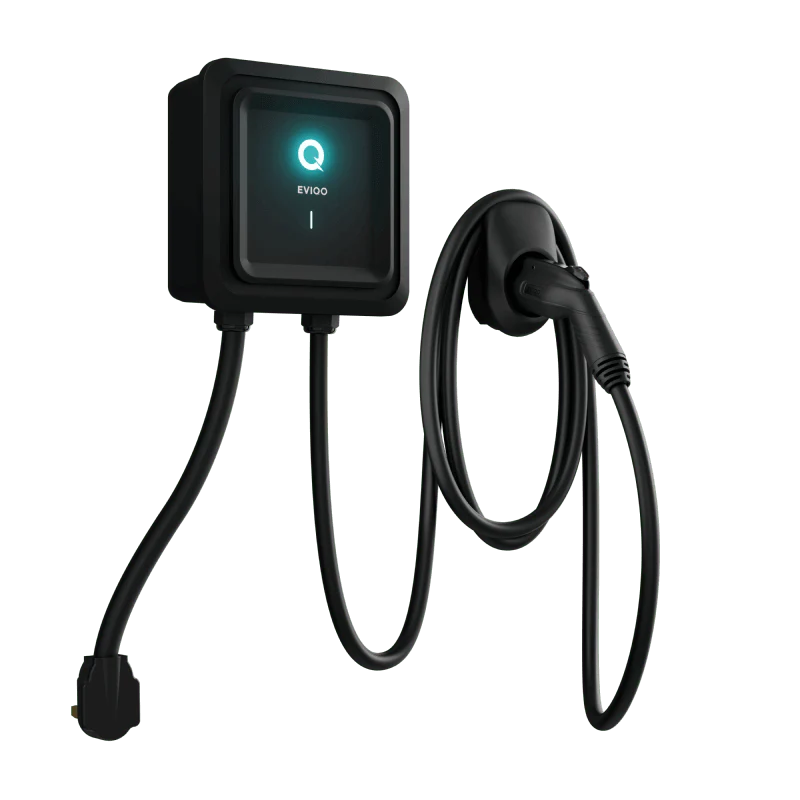How quickly your vehicle charges may be limited by the EV’s acceptance rate or your electrical panel. Consider the following to maximize your charging speed:
- Electrical Panel: Identify the max breaker size your panel can handle. Your circuit breaker must be rated to at least 125% of the charger amperage output. (Ex: 40A charging/50A breaker)
- Acceptance Rate: Vehicles cannot charge faster than their max acceptance rate, which is measured in kWh. Easily adjust your charger output to the maximum amperage your vehicle or electrical panel can accept.
- Future Considerations: Adjusting amperage provides the ability to upgrade to faster charging in the future if your vehicle or panel requirements change. If upgrading your electrical now, consider future proofing the wiring for higher amperage charging in the future.
- Changing Amperage: Easily adjust amperage output to simplify installation while maximizing the charging speed for your home or vehicle. Choose between 16A, 24A, 32A, 40A, 48A, and 50A charging outputs.
Unlike gas stations where you always know how long it’ll take to fill up your car’s tank, charging your EV (or plug-in hybrid car) can have different speeds depending on the level and type of charger you're using.
Mind you, it’s not as complicated as it might seem, and although jargon like “kilowatts” and “amperage” might seem irregular, charging your EV can be as simple as charging your phone.
The 3 Levels of Electric Vehicle Charging
Electric vehicle charging consists of 3 levels: Level 1, level 2, and level 3. Each level defines a different power output and speed, with level 1 being the slowest and level 3 being the fastest mode of charging. The difference in charge time and speed between level 1 and level 3 charging is massive. Level 2 charging falls in between, offering a much higher speed than standard level 1 chargers.
Level 1 EV Charging
Most EV manufacturers in North America provide a standard level 1 charger with a new electric car. These chargers provide between 1 kW and 1.8 kW of power and are usually the slowest and most inefficient of all EV chargers out there. Level 1 chargers use a J1772 (Type 1) EV connector and a standard 3-prong house-hold plug. They’re plugged into a common residential 120-volt AC outlet which is why they’re quite common in North America but non-existent in Europe due to standard residential electricity being 230-volt.
Charging Speed of a Level 1 EV Charger
Known for being a backup charger, a standard level 1 charging equipment can take as much as 40 to 50 hours to fully charge an EV from 0 to full. These chargers typically provide an average of 4-7 miles per hour of charging. What this means is, unless your every-day EV usage is no more than 15-20 miles, you cannot rely on level 1 charging
Level 2 EV Charging
Level 2 EV charging is currently the most common type of charging around the world. Providing high levels of efficiency and miles per hour, it’s commonly found in garages, driveways, workplaces, and grocery stores. If you’re an EV owner, it is recommended that you have a level 2 charger plugged in or hardwired in your garage or driveway.
A level 2 charger is much faster than a standard level 1. It operates using a 208-Volt to 240-Volt AC outlet in North America and 230-Volt or 400-Volt outlet in Europe. Level 2 charging rates can vary depending on power output and amperage of each individual unit. For example, a 24-amp level 2 charger can provide around 6.0 kW of continuous power, while an 80-amp unit can provide as much as 19.2 kW of continuous power making it almost 4 times faster than a 24-amp unit. However, it all depends on the hardware of your EV which determines the maximum charge rate it’s capable of.
Additionally, most level 2 EV chargers come with high tech features that allow smart usage of energy and scheduling options. Many chargers offer load balancing, OCCP networking, and RFID cards.
Charging Speed of a Level 2 EV Charger
With power outputs topping out at 19.2 kW (80-Amps) in North America and 22 kW in Europe, level 2 chargers can charge your EV 9 times faster than a standard level 1 charger. Depending on the power output of the charger and the charge rate capability of your EV, level 2 chargers typically take between 4-10 hours to charge from 0% to 100%, providing around 15-35 miles of driving range for each hour of charging.
Level 3 EV Charging
Level 3 EV charging, also known as DC fast charging, will charge your EV significantly quicker than level 1 or level 2 charging. Converting AC power to DC power before it’s supplied to your EV, level 3 charging stations are essential for long trips where more and more miles are required along the journey.
Level 3 charging stations have a power output capability of as much as 500 kW, utilizing a three-phase supply with 480-volt in North America and 400-volt in Europe. However, even with a level 3 charger that’s capable of supplying a power output as high as 500 kW, it largely depends on how much power your EV can handle. An EV with a 50 kW capability will not charge any faster even if it uses 500 kW level 3 charging.
Charging Speed of a Level 3 EV Charger
Being a significantly faster charging option than using level 1 and level 2 chargers, it only takes 30 minutes to 45 minutes for level 3 chargers to fully charge your EV from 0% to 100%, depending on its charge acceptance rate. In terms of range, level 3 chargers typically provide between 200 to 250 miles in half an hour of charging.


